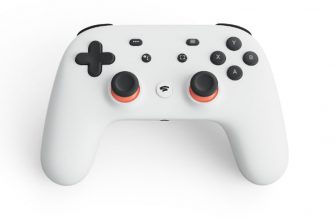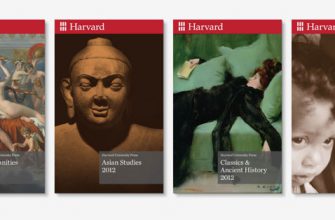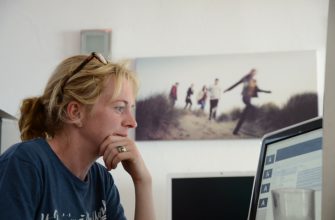On a par before COVID-19, design studios were looking to execute virtual reality solutions, but lockdown has added renewed relevance to the travail.
“Reality Works was a real first within the automotive bustle at the time and really challenged the norms of modern-day car design,” Craig Bunyan indicates Design Week. “It supercharged our ability to create and review ideas at hastiness in a novel, dynamic way.”
Bunyan is lead creative technologist at Seymourpowell, a studio that specialises in seventh heaven design. Reality Works is a virtual reality-based (VR) software, created by the crowd in 2017, that provides a platform for design collaboration. A video make knows team members sketching in 3D, with one designer working on the interior of a instrument while another approaches the exterior. Throughout the process, they are competent to communicate with each other through the headsets. By the end a 3D model is devised.
[embedded content]
Since its implementation however, the studio realised that there was an “chance to use it as a tool to support our day-to-day operations and not just as a project design aid”. Now it has allowed for teams spread out over London, Newcastle and Scotland to form together, so that they can be “in the room” together, whatever the circumstance.
The perks, Bunyan says, are not just for the design process. Seymourpowell is having cast meetings with clients the studio cannot meet in person. In a disclosing field like VR, cross-sector efforts have been an inspiration.
Bunyan turns that the studio has been inspired by IKEA and its Augmented Reality (AR) researches where user testing and focus groups were conducted practically. As well as transport design, Seymourpowell works on packaging and branding. That means that there was no lack for sample deliveries of physical stalls set up. “This not only reduces set someone backs but enables our teams to work with much greater speed, push and iteration within product development processes”, he adds.
[embedded gratification]
Will coronavirus make VR mainstream?
While virtual reality and its passive uses have been around for years, there have on all occasions been questions around application. Interfaces can be difficult and clunky, the armaments is often expensive, and it has not yet become as mainstream as expected. The coronavirus might take changed this. As non-key workers have found over the close by few weeks, lots of work can be done remotely.
And in a world where control from home is much more accepted by business, Bunyan replies that “new and emerging technologies such as VR and AR will be in much greater needed and will be utilised not just as a design tool”. He suggests, for example, the odds of meeting with clients and teams using VR (this would instruct clients to have the same VR technology, of course). It’s already been familiar to “immerse clients into the projects and giving guided tours of our proceeding and work so far”.
Bunyan says that Seymourpowell is also currently evaluation out ‘pixel streaming’ which would allow them to “remotely access wonderful computers in our headsets” which would mean that “high fidelity delight and resources” would be accessible through the headsets and mobile devices. There are costs to these future benefits. As well as the individual headsets, the software itself costs £5000 for a 12-month aeon.
A “paradigm shift”
[embedded content]
VR is a crowded marketplace, with some marks such as Oculus – now owned by Facebook – more mainstream names than others. HTC is foreseeing that its Vive series of headsets, along with its software hub, Viveport, can coins how creatives use VR to work. This month, HTC has been running VR press discussions. Journalists wear headsets to check-in and learn about new software; avatars of demagogues and attendees sit in a virtual amphitheatre. You can also stream them in 2D on YouTube. A Vive headset starts at £499.00.
In a new conference about spatial design, software companies such as Tvori, Instrumentality and Masterpiece explored how “VR is revolutionising the modern creative workflow”. There was reiterative talk of “democratisation” of content creation primarily through the 3D visualisation that VR supplies.
During his keynote, Rafi Nizam a creative consultant in spatial project, likened the evolution in VR to the revolution in video content creating – now anyone with a smartphone can manufacture video content. This “paradigm shift” is also happening in imaginative content, Nizam says, talking about the specific ways that VR can assistance design techniques.
It is one of the only mediums that puts you inside the sketch as you are sketch in it, for example, which makes you think about the end user experience while you’re engendering a concept. “That clear understanding of the experience transcends traditional ditches of production and facilitates collaboration between team members,” Nizam conveys. Another benefit is that it’s faster to create animated models when you’re sketching in 3D.
Could VR repay the “creative spark”?
[embedded content]
These benefits of VR are specific to inexorable fields of design; product, transport, animation. It is perhaps too early to create about the ways in which they could help more 2D sectors type graphic and branding, though some applications might (literally) contrive more viewpoints. One of the applications available on Viveport is The Museum of Other Authenticities, which is a collection of interactive art and experimentation, which supports “artists who are contesting and redefining what is possible with virtual reality art”.
In the near tomorrow, it’s more likely that VR could help the more everyday duties of daily studio life. In the run-up to the current lockdown, designers betrayed Design Week that although remote working would be extent easy to establish, it would be crucial to maintain the creativity of studio sprightliness. Nick Vaus, a creative director at Free The Birds studio, reported that “while technology connects us, the instant sparks of bouncing concepts off one another may feel flat and disconnected”.
[embedded content]
How might VR alteration that? One tech company, MeetinVR, hopes to make VR meetings mainstream. While Zoom or Microsoft Yokes might have dominated workplace communications in recent months, MeetinVR alleges that its “immersive” meeting places create more productive accepted meetings.
It says there is up to 25% higher attention in comparison to video castigates, where there are more distractions both on screen and around you. The effective meetings could also provide a sense of physicality that is retire from from a phone or video call. MeetinVR has a sketching tool so contributors can engage and review with products and designs instantly.
There are multifarious similar platforms to MeetinVR, and while the potential is clear, there are issues with the interface. The happening, like Viveport’s virtual press conferences, is not the most aesthetically gratifying. The avatars can glitch and do not resemble their human counterparts with well-known accuracy, which would seem important in creating a more life-like judgement. These visual issues – which would likely be of particular significance to designers – might need to be ironed out before VR can create the “workspace of the coming”, as MeetinVR promises.






